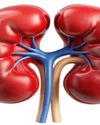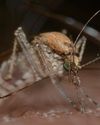Versuchen GOLD - Frei
AMR: an increasing global burden for animal and human health
Scientific India
|May-June 2025
We all have heard about MDR or multi drug resistance strains for some important human diseases like TB (tuberculosis), but the increasing number of resistant bacterial strains in livestock is a serious concern for animal health and eventually, human health too.

This sharp increase in the occurrence of AMR or antimicrobial strains in farm animals has been observed due to the overuse of antimicrobials to maintain the health and productivity of farm animals. Thus, the urge to maintain high quality animal protein in order to meet the growing demands of its consumption has prompted the emergence of drug-resistant bacteria and in turn making the drugs less effective in livestock. In a recent study published in Science (Boeckel et al., 2019), it was found that China and India are the largest hotspots of resistance, with new hotspots emerging in Brazil and Kenya. It was also found that the highest resistance rates were observed in the most commonly used classes of antimicrobials in animal production, namely, tetracyclines, sulfonamides, and penicillins as well as in ciprofloxacin and erythromycin, which are considered critical to human medicine. It has been reported that from 2000 to 2018, there has been a substantial increase in the fraction of antimicrobial compounds with resistance higher than 50% (P50) with almost a three-fold increase in chickens (0.15 to 0.41) and from 0.13 to 0.34 in pigs (Boeckel et al., 2019). This is alarming data which needs the attention of governmental policies and administration, since in most of the countries across the world, the sale of veterinary antimicrobials is largely unregulated. The decision makers need to charter legislative acts or rules which restrict the use of antimicrobials in livestock and implementation of AMR surveillance programs on animal farming also. Most importantly, sustainable farming practices should be encouraged wherein the animals are provided with sufficient food and space, which will further reduce the use of antimicrobials in animals. Most importantly, 'One Health’ approach must be applied at all fronts integrating human, animal, and environmental health perspectives for long-term success (Tang et al., 2023).
Diese Geschichte stammt aus der May-June 2025-Ausgabe von Scientific India.
Abonnieren Sie Magzter GOLD, um auf Tausende kuratierter Premium-Geschichten und über 9.000 Zeitschriften und Zeitungen zuzugreifen.
Sie sind bereits Abonnent? Anmelden
WEITERE GESCHICHTEN VON Scientific India
Scientific India
Japanese physicists were the first to measure the most tolerant entanglement state, the W state
There are many unusual things that happen in the world of quantum physics.
3 mins
September - October 2025

Scientific India
The Fifth Force: Could It Unlock the Secret of Dark Matter?
What if the universe is powered by a force we've never seen before? For centuries, science has explained nature with four fundamental forces.
3 mins
September - October 2025

Scientific India
A flu test you can chew
As flu season nears in the northern hemisphere, scientists are exploring a surprising new way to detect infection: through taste.
1 mins
September - October 2025

Scientific India
Lab-Grown Kidney Brings Artificial Organ Dream Closer to Reality
In a major leap toward bioengineered organ replacement, scientists have successfully grown human kidney 'assembloids' in the laboratory that mimic key structural and functional features of natural kidneys.
1 min
September - October 2025

Scientific India
Your pumpkin might be hiding a toxic secret
Pumpkins, squash, zucchini, and other members of the gourd family have a surprising trait: they can take up pollutants from the soil and store them in their edible parts.
1 mins
September - October 2025

Scientific India
2025 Nobel Prize in Physics Reveals Quantum Secrets in Superconducting Circuits
The 2025 Nobel Prize in Physics has been awarded to John Clarke, Michel H. Devoret, and John M. Martinis for their pioneering experiments that brought quantum mechanics from the invisible atomic world to the macroscopic scale a system large enough to hold in your hand.
1 mins
September - October 2025

Scientific India
Genomic Evidence Redefines the Evolutionary Age of Mosquitoes
A new genetic analysis has shaken up what we thought we knew about one of humanity's most notorious pests the mosquito.
1 min
September - October 2025

Scientific India
Nobel Prize in Chemistry 2025: Building Molecular Architectures with Room to Breathe
In a scientific breakthrough that bridges molecular design with planetary-scale problems, the 2025 Nobel Prize in Chemistry has been awarded to Susumu Kitagawa, Richard Robson, and Omar Yaghi.
1 mins
September - October 2025

Scientific India
Guardians of Immunity: Nobel Prize 2025 Honors Discoveries that Keep the Immune System in Check
The 2025 Nobel Prize in Physiology or Medicine has been awarded to Mary E. Brunkow, Fred Ramsdell, and Shimon Sakaguchi for their groundbreaking discoveries in the field of peripheral immune tolerance a crucial mechanism that prevents the body's immune system from turning against itself.
1 mins
September - October 2025

Scientific India
'Is cold nuclear fusion feasible?
In early May 1989, two chemists from the University of Utah, Pons and Fleischmann, arrived in Washington, U.S.A. The aim is to present their findings to members of the US Congress.
3 mins
September - October 2025
Listen
Translate
Change font size
